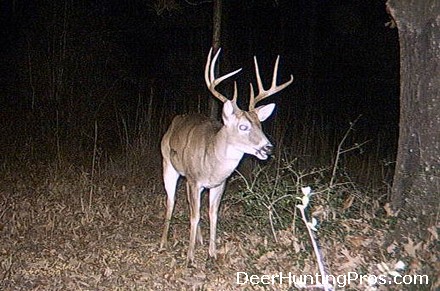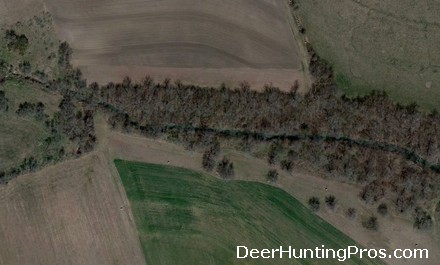It’s late August and the upcoming whitetail deer hunting season is just around the corner. As many hunters begin to prepare their plan of attack, it’s a good time to share some deer hunting tips that have worked for me in the past. Hunters that chase whitetail do so for many reasons, but many love the hunting strategy that is involved. Let’s face it, we spend hours around campfires talking about where, when and how to hunt deer. I love it!
Whitetail deer are smart creatures, but they do develop specific patterns. These patterns can often be found in the areas you hunt, but you have to know where to look. Sometimes hunters think way too much about what a deer may do, instead of just looking at what deer are currently doing. Get out a look for areas that deer are using. Once you find them, hunt them. Here are a few deer hunting tips on places to find whitetail deer in your area:
First, pay attention to fences. Whitetail, like most animals, do not want to do any more than they have to. After all, why waste energy? Check out fences in your hunting area and look for places where wires are broken, where deer can easily travel over or under the fence. These places typically stick out because deer trails are readily found there, particularly in areas with good habitat. Hunt these places. You know deer are crossing in this exact spot, so hunt the wind accordingly and you will see deer.

Next, look for natural saddles that occur on your deer hunting grounds. Again, deer are not going to waste valuable resources. They do not want to cross the most rugged terrain, unless they are in areas of extreme hunting pressure. Deer will travel the “easy stuff,” especially when they think no one is there. Hunt saddles during the middle of the day or during the deer rut, when bucks do not want to waste time making tracks. This can be a very successful hunting tactic during the rut or the late season.
Next, never underestimate the ability of water to attract deer. Not only is water a requirement, areas with it usually provide a buffet of high quality deer foods. In riparian areas, such as creeks, rivers and streams, not all banks are created equal. Deer use certain areas much more than others. Find these easy-access sites where they water and cross and set up an ambush. This is an especially effect deer hunting technique at northern latitudes, where frigid cold temperatures mean whitetail deer do not want to get wet. The same technique applies to swamps, marshes and bogs. Hunt the higher ground on the edges of these wetlands and you will see deer.

Lastly, look for fingers of brush, woods or even just taller-than-average weeds on the landscape. Deer are cover-oriented animals. They love to walk in or near structure, even if it is only three feet tall. Mature whitetail bucks are especially good at using any available cover to screen themselves. Pay particular attention to woodlines that stretch out into winter food plots for deer or areas that provide good natural forage. Jump on Google Earth and check out your deer hunting areas from above. These “deer highways” typically jump right out.
Some of these deer hunting tips may seem like old hat to veteran hunters, but I know from experience that sometimes we ignore the obvious thinking that we will out-think the deer. All we end up doing is out-thinking ourselves. Look for fence and water crossings in your area as wells as saddles and fingers and you will identify areas where whitetail travel the most. Get out there as soon as possible because the fall deer hunting season is just around the corner. Best of luck!